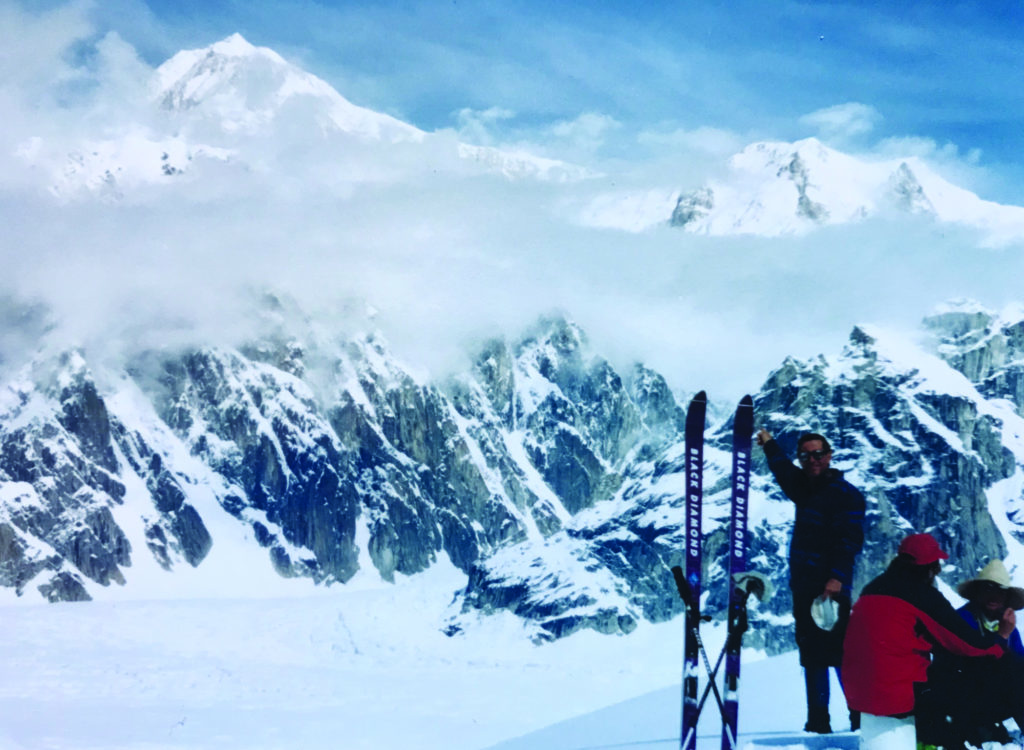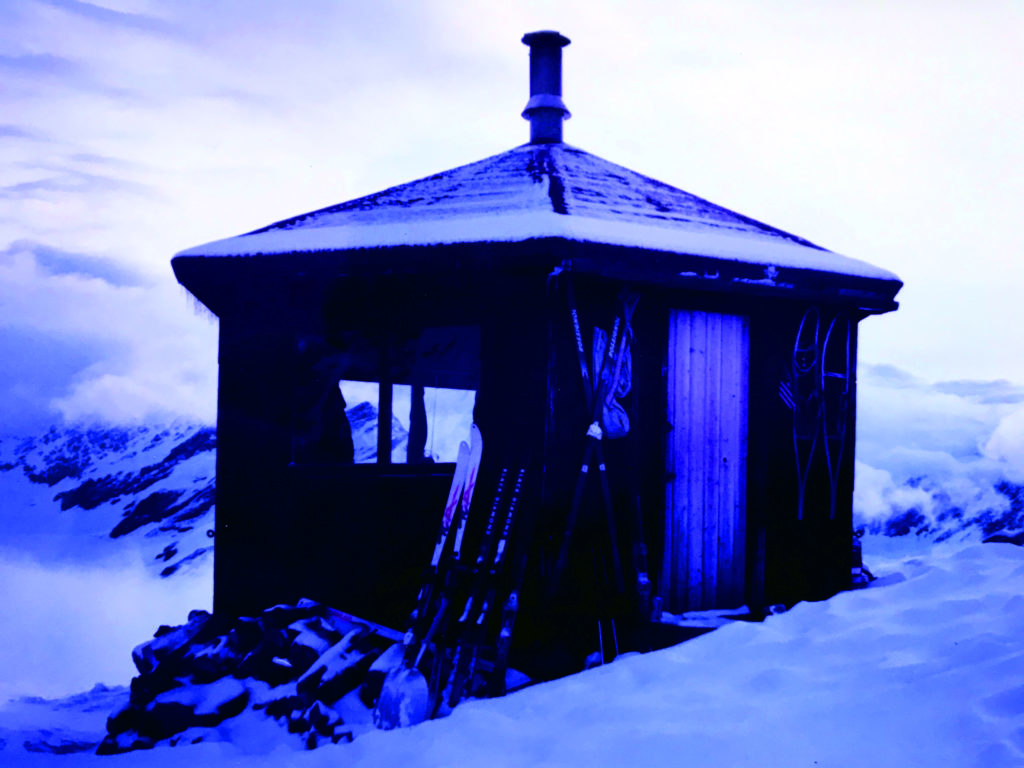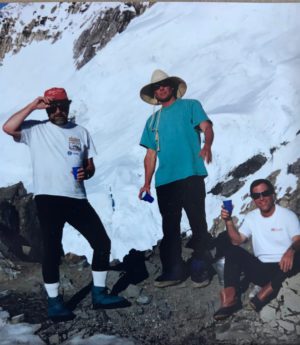
On Friday, April 2, 2021, five people were stranded on the Ruth Glacier in Denali National Park when poor weather closed in and prevented them from flying out.
The group had arrived in a Cessna 180 and two Piper PA-18s on the glacier, which is one of the largest in the park and sits on the southeast side of Denali.
The group requested a rescue on Saturday morning, due to limited survival resources. Two guides from the nearby Sheldon Chalet, a recently built two-story luxury lodge in the amphitheater of the glacier, skied 3.5 miles with extra equipment to lead them to the Sheldon Mountain House, which was built in 1966. It is very close to the fancy lodge, and comparable to a public-use cabin.
They stayed there until Monday when the weather cleared and they were air-taxied to their planes to fly out.
Dramatic changes in weather are not uncommon on Denali, and in May of 1996, a small group of Cordova backcountry skiers experienced them firsthand.
Jay Beaudin, John Davis, Larry Ermold and I flew from Talkeetna in one of Doug Geeting Air Service’s Cessna 180s for a four-day stay at the famous Sheldon Mountain House.
Reservations for the popular shelter had been made a year before, and we picked up the keys from Roberta Sheldon in a modest home on one of the Talkeetna’s little side streets.
Her husband Don Sheldon, who passed away in 1975, was one of Alaska’s most famous pilots. In the ‘50s and ‘60s, he pioneered high altitude glacier landings on Mt. McKinley, and hauled in the material to build the original hut, planeload by planeload.
Planning for all possible conditions, including a chance of being weathered in, we flew in with all kinds of gear and extra food, including climbing equipment in anticipation of crossing crevice terrain. It would take two flights to get us and our gear to the hut.
Waiting at Talkeetna’s small airport was quite a show. Climbing season on McKinley was in full swing, and several air services were ferrying clientele to and from the mountain.

In fact, a pair of German climbers offloaded from the plane we were about to take. They had been on the Kahiltna Glacier for almost two weeks, and not once seen the top of the mountain.
Unbelievably, when we flew up the Ruth Gorge past the famous Moose’s Tooth and into the Ruth Amphitheater, not a cloud was in sight. We landed on the glacier directly below the Mountain House and worked up a sweat ferrying supplies on plastic sleds up to the hut, which sits on a sharp rock outcropping with an absolutely stunning view.
With everything finally in place, and the plane gone, we stood in quiet awe of Mt. McKinley in all its glory. It was so warm we stripped down to basic under-layers and grilled steaks outside the hut, while toasting our lucky stars for such a successful arrival at one of Alaska’s most famous panoramas.
The weather wasn’t the only surprise. From our particular perspective, we were amazed at how differently the McKinley summit looked from traditional photos of the mountain.
Around 10 p.m., just before settling into the hexagonal-shaped hut, which featured a small wood stove in the center, John Davis noted a lenticular-shaped cloud forming over the top of McKinley.
He casually mentioned that based on accounts by climbers attempting to scale North America’s tallest mountain, such a cloud pattern usually meant impending wind and snow.
Boy, were they right. By 2 a.m., the hut was shaking and a total whiteout had engulfed us. We hunkered down as it lasted through the morning, and then gradually subsided to reveal a foot of incredible powder and blue skies.
Because of concern about avalanches and hidden crevasses, we opted to ski directly above and behind the hut, and were astonished after climbing to discover that the hut looked like a dot far below. The scale of the terrain was unbelievable.
Also unbelievable was our good fortune for the next four days. The same weather pattern, with somewhat diminished winds but layers of fresh snow, occurred every day. Not only did it produce outstanding skiing, it also prevented any air traffic.

We had the Ruth Amphitheater all to ourselves – except for a lone German climber who had somehow soloed the mountain behind us, despite the constant roar of avalanches each day.
He showed up on Day 3, pitched a tent on the edge of the rock outcropping below us, and was content to camp there while waiting for a flight out.
To cap our good fortune, on the last day, we arose to clear skies and a pickup right on schedule.
The only drawback was we had to help stomp out a runway in the deep snow so the plane could take off.
Strangely enough, just a month after our four-day stay at the Sheldon Hut, a new establishment called the Moose’s Tooth Pub and Pizzeria opened in Anchorage.
It has grown to be hugely popular, and a favorite stop whenever we visit Anchorage, not only for its great food and ales, but also because while waiting to be called for a table, I can look at a poster of its namesake on a nearby wall, and still remember flying right past it 25 years ago, on that unforgettable adventure in the Ruth Amphitheater and Sheldon Mountain House.
Note: Mt. McKinley was officially renamed Denali in 2015. Since we were there in 1996, I have referred to it as Mt. McKinley in my description of our visit.





